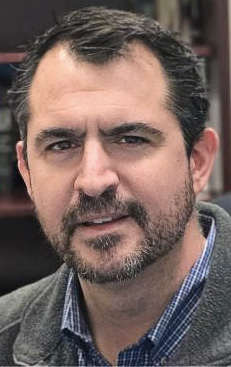

 Want to be a cybersleuth and track down hackers? It may sound ambitious considering that malevolent entities are extremely clever, and tracing them requires certain skills that may not be easy to build for the typical computer user. But then again, the best defense is offense. And learning the basics of sniffing out cybercriminals may not only be necessary nowadays, it has become essential for survival on the Web. So where can you begin?
Want to be a cybersleuth and track down hackers? It may sound ambitious considering that malevolent entities are extremely clever, and tracing them requires certain skills that may not be easy to build for the typical computer user. But then again, the best defense is offense. And learning the basics of sniffing out cybercriminals may not only be necessary nowadays, it has become essential for survival on the Web. So where can you begin?
 As part of my job, I manage an incident response team that was engaged by a significant organization in Georgia whose network was infected by the QBOT (a.k.a. QAKBOT) malware. The customer had been infected for over a year, several teams before ours had failed to solve the problem, and they continued to get reinfected by the malware when they thought they had eradicated it. Over time it had spread to more than 1,000 computers in their ecosystem stealing user credentials along the way.
As part of my job, I manage an incident response team that was engaged by a significant organization in Georgia whose network was infected by the QBOT (a.k.a. QAKBOT) malware. The customer had been infected for over a year, several teams before ours had failed to solve the problem, and they continued to get reinfected by the malware when they thought they had eradicated it. Over time it had spread to more than 1,000 computers in their ecosystem stealing user credentials along the way.
 Plaintiff anti-malware software provider sued defendant -- who also provides software that protects internet users from malware, adware etc. -- bringing claims for false advertising under the Section 43(a) of Lanham Act, as well as other business torts. Plaintiff claimed that defendant wrongfully revised its software's criteria to identify plaintiff's software as a security threat when, according to plaintiff, its software is "legitimate" and posed no threat to users' computers.
Plaintiff anti-malware software provider sued defendant -- who also provides software that protects internet users from malware, adware etc. -- bringing claims for false advertising under the Section 43(a) of Lanham Act, as well as other business torts. Plaintiff claimed that defendant wrongfully revised its software's criteria to identify plaintiff's software as a security threat when, according to plaintiff, its software is "legitimate" and posed no threat to users' computers.
 The Qatar Crisis started with a targeted Poli-Cyber hack of an unprecedented nature. Its shockwaves and repercussions continue to alter political and business fortunes, directions and paradigms not only in the Gulf region but globally. Almost everyone around the world is now aware of the this crisis that started early June. By mid July a Washington Post report cited US intelligence officials that the UAE orchestrated hacking of Qatari government sites, sparking regional upheaval that started it all.
The Qatar Crisis started with a targeted Poli-Cyber hack of an unprecedented nature. Its shockwaves and repercussions continue to alter political and business fortunes, directions and paradigms not only in the Gulf region but globally. Almost everyone around the world is now aware of the this crisis that started early June. By mid July a Washington Post report cited US intelligence officials that the UAE orchestrated hacking of Qatari government sites, sparking regional upheaval that started it all.
 Computer security costs money. It costs more to develop secure software, and there's an ongoing maintenance cost to patch the remaining holes. Spending more time and money up front will likely result in lesser maintenance costs going forward, but too few companies do that. Besides, even very secure operating systems like Windows 10 and iOS have had security problems and hence require patching. (I just installed iOS 10.3.2 on my phone. It fixed about two dozen security holes.)
Computer security costs money. It costs more to develop secure software, and there's an ongoing maintenance cost to patch the remaining holes. Spending more time and money up front will likely result in lesser maintenance costs going forward, but too few companies do that. Besides, even very secure operating systems like Windows 10 and iOS have had security problems and hence require patching. (I just installed iOS 10.3.2 on my phone. It fixed about two dozen security holes.)
 WannaCry, originated firstly in state projects but spread by other actors, has touched upon myriads of infrastructure such as hospitals, telecommunication, railroads that many countries have labelled as critical. IT engineers are hastily presenting patching codes in various localized versions. The other patch needed, however, is more than technical. It is normative and legislative. The coding of that patch for a situation like this is in two layers of dilemma.
WannaCry, originated firstly in state projects but spread by other actors, has touched upon myriads of infrastructure such as hospitals, telecommunication, railroads that many countries have labelled as critical. IT engineers are hastily presenting patching codes in various localized versions. The other patch needed, however, is more than technical. It is normative and legislative. The coding of that patch for a situation like this is in two layers of dilemma.
 359,000 computers infected, dozens of nations affected world-wide! A worm exploiting a Windows OS vulnerability that looks to the network for more computers to infect! This is the most pernicious, evil, dangerous attack, ever... Queue the gnashing of teeth and hand-wringing! Wait, what? WannaCry isn't unprecedented! Why would any professional in the field think so? I'm talking about Code Red, and it happened in July, 2001.
359,000 computers infected, dozens of nations affected world-wide! A worm exploiting a Windows OS vulnerability that looks to the network for more computers to infect! This is the most pernicious, evil, dangerous attack, ever... Queue the gnashing of teeth and hand-wringing! Wait, what? WannaCry isn't unprecedented! Why would any professional in the field think so? I'm talking about Code Red, and it happened in July, 2001.
 There are many news reports of a ransomware worm. Much of the National Health Service in the UK has been hit; so has FedEx. The patch for the flaw exploited by this malware has been out for a while, but many companies haven't installed it. Naturally, this has prompted a lot of victim-blaming: they should have patched their systems. Yes, they should have, but many didn't. Why not? Because patching is very hard and very risk, and the more complex your systems are, the harder and riskier it is.
There are many news reports of a ransomware worm. Much of the National Health Service in the UK has been hit; so has FedEx. The patch for the flaw exploited by this malware has been out for a while, but many companies haven't installed it. Naturally, this has prompted a lot of victim-blaming: they should have patched their systems. Yes, they should have, but many didn't. Why not? Because patching is very hard and very risk, and the more complex your systems are, the harder and riskier it is.
Harvard Business Review just ran an interesting article on the information security aspects of Internet of Things (IoT). Based on the storyline, the smart city initiatives are doomed to fail unless the security of the IoT devices and the systems will be improved. While security of the digital society is obviously a key concern, I am not entirely convinced that relying on the security of individual devices and systems is the best course of action.
One thing was clear from a recent presentation by the new leaders of the SF-Bay Internet Society (ISOC) Chapter Working Groups: inclusion and collaboration will be the key to these groups' success. As Dr. Brandie Nonnecke, the Internet Governance Working Group (WG) Chair said, "We haven't yet cracked the code on what 'multistakeholder' means." But that won't stop her and Dr. Jaclyn Kerr, the Data Protection, Privacy, and Security WG Chair, from trying.